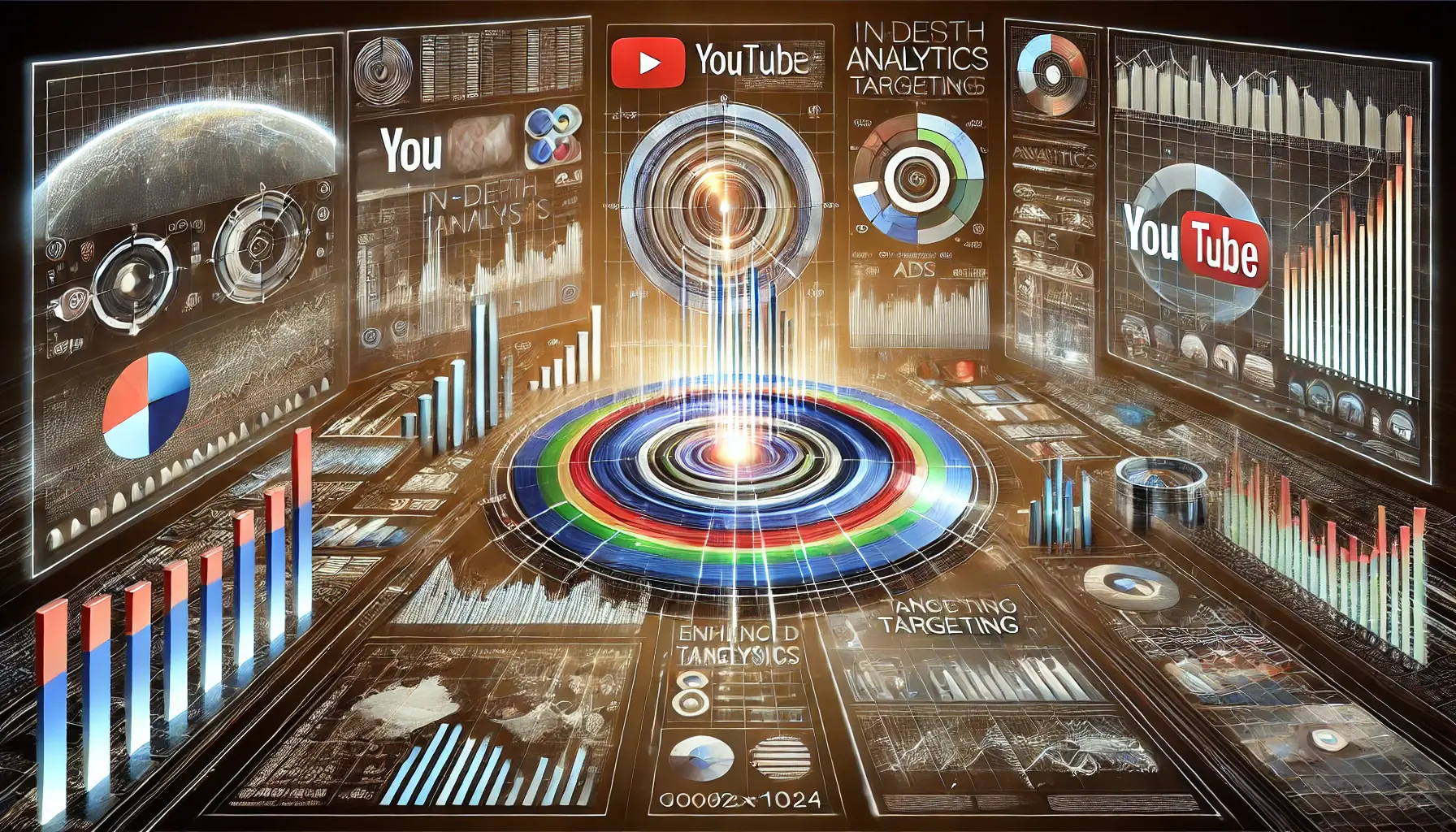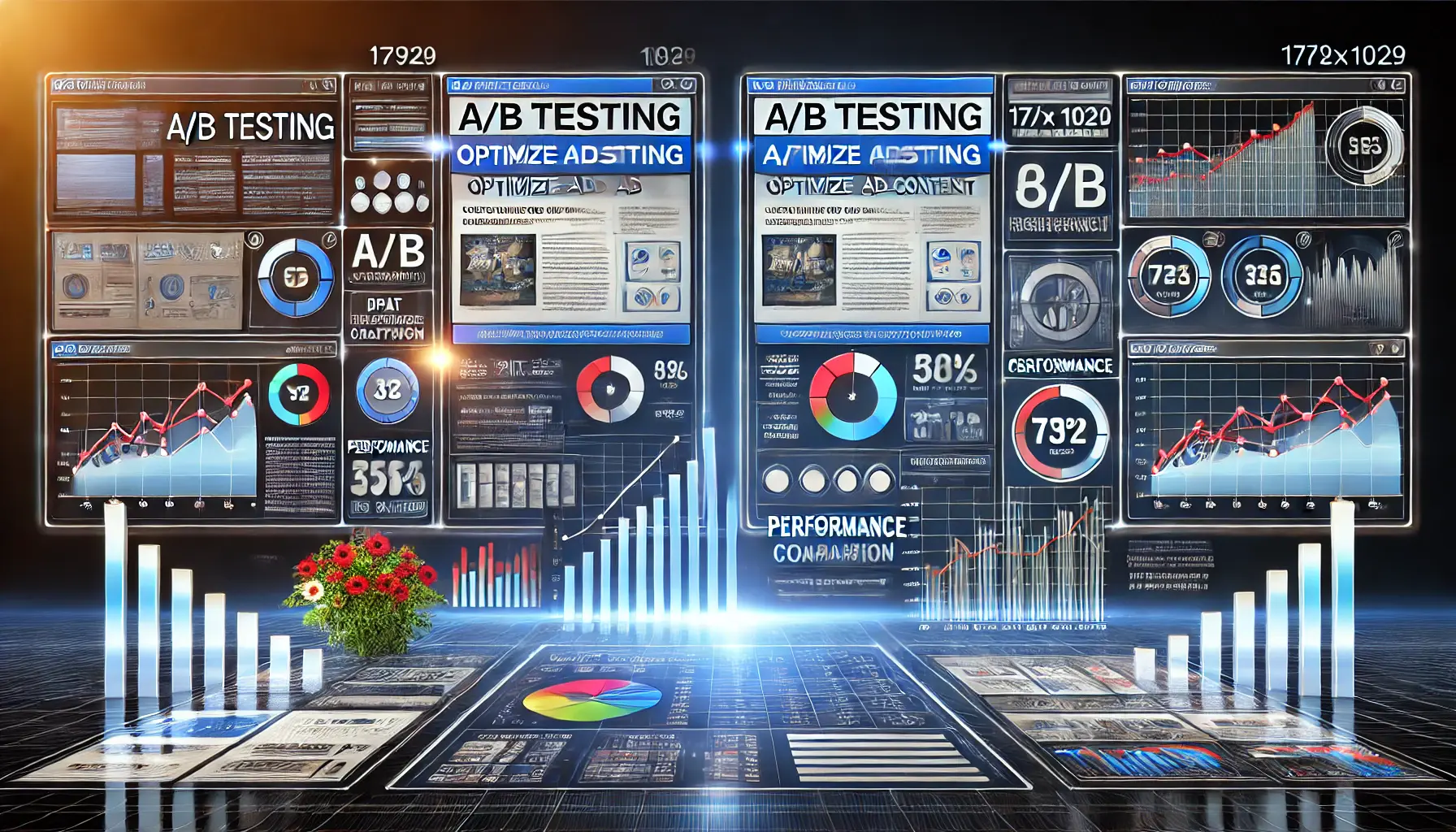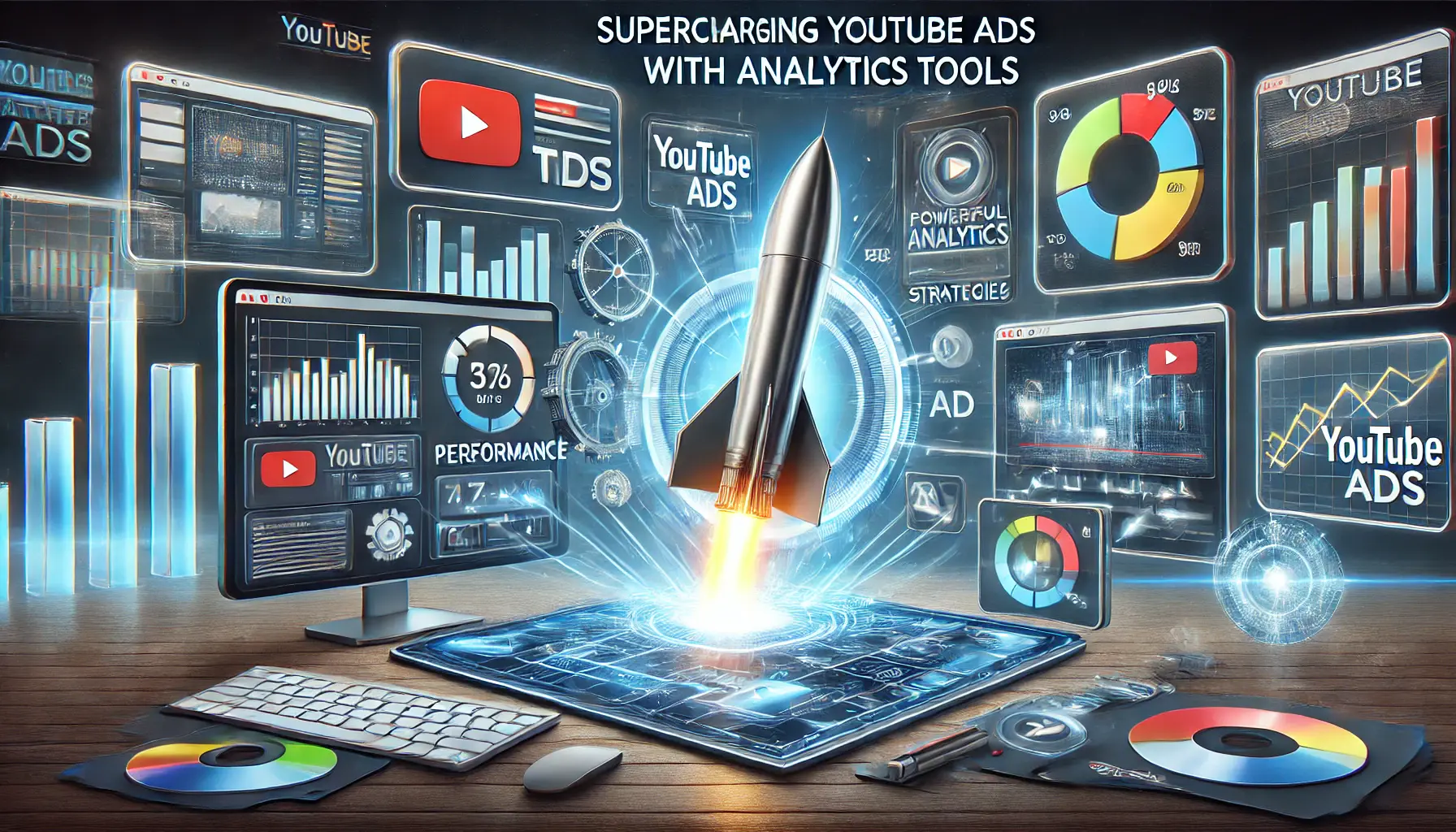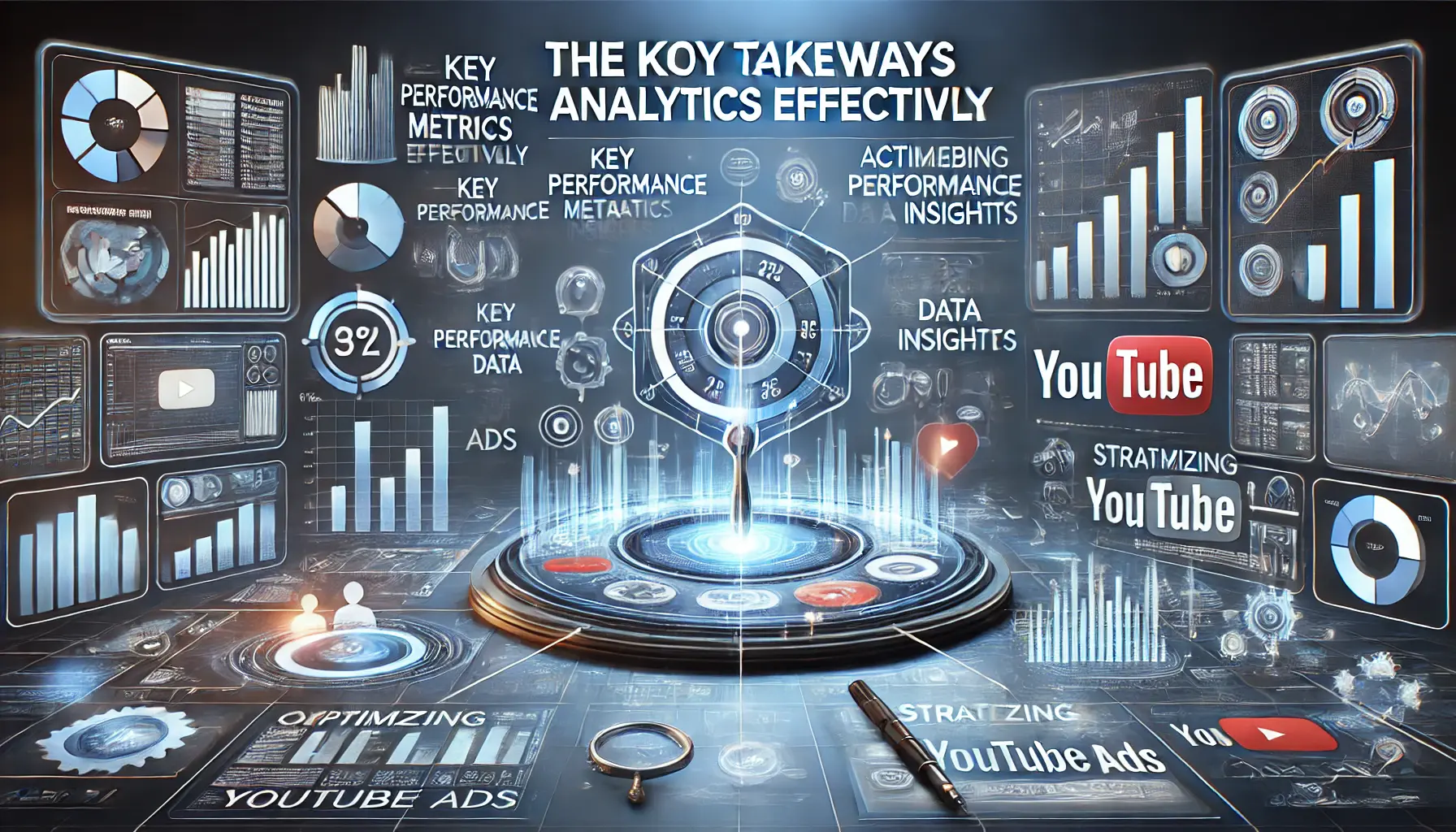YouTube Ads have become integral to any digital marketing strategy, enabling businesses to create unique opportunities for reaching millions of users by showing them engaging video content.
However, all the benefits of advertising on YouTube cannot be truly realized unless you understand how your ads are performing and actually track that performance.
That’s where analytics tools come in.
With the right analytics, you can gain insights into your audience, measure ad effectiveness, and learn how to optimize campaigns for better engagement and conversions.
Throughout this guide, we are going to discuss the best analytics tools that will help you increase your YouTube Ads success and make data-driven decisions.
Now, as we delve into these tools, consider how each might allow you to gain a clearer view of your campaign’s performance.
Are you getting the level of engagement that you expected?
Which videos are making the most impact?
With powerful analytics, you will have answers to these questions and more as you elevate your YouTube advertising strategy to the next level.
- Why Analytics Matter for YouTube Ads Success
- Top YouTube Analytics Tools to Measure Performance
- Advanced Analytics Tools for In-Depth Analysis and Targeting
- How to Make the Most of Analytics Tools in YouTube Advertising
- Combining Different Analytics Tools to Understand Your YouTube Ads Better
- Conclusion: How to Supercharge Your YouTube Ads with Analytics Tools
- General Questions About YouTube Ads Analytics Tools
Why Analytics Matter for YouTube Ads Success
For any YouTube ad campaign, analytics are fundamental to an effective strategy.
It’s impossible to understand what works and what doesn’t without tracking and analyzing the right data.
Analytics go beyond simple views and likes, offering detailed insights that help you further optimize your content, better target your audience, and, in the end, achieve a greater ROIReturn on Investment, a measure of profitability..
Let’s look closer at why analytics are so important for YouTube Ads, including the types of metrics you should track and how analytics can transform your campaign’s success.

Uncovering insights with analytics in YouTube advertising.
Understanding the Role of Analytics in YouTube Advertising
Analytics in YouTube advertising help you make informed, data-driven decisions.
Instead of guessing or assuming how your ad is doing, analytics allow you to view up-to-the-minute data and trends that show you precisely how users are interacting with your ads.
From how long viewers spend watching your ad to whether they click through to your website, these insights are invaluable for optimizing your ad content.
When you understand what components of your ads resonate with your viewers, you can iterate and craft future campaigns for better performance.
This means more engagement, conversions, and a stronger ROI.
Ultimately, analytics give you the power to continuously improve your YouTube ads based on hard data.

Optimizing ad campaigns through data-driven insights.
How Data-Driven Decisions Impact Ad Campaigns
A data-driven approach to decision-making ensures that your marketing budget is spent wisely.
By analyzing key metrics, you can identify what works and allocate resources accordingly.
This approach is especially valuable for YouTube Ads, where video content and audience engagement can vary significantly.
Since you are basing decisions on real data, you are less likely to make costly mistakes, and you can enhance the efficiency of your campaigns.
For example, if you learn that a specific ad format or video length results in higher viewer retention, you can prioritize those styles in upcoming ads.
Or, if a particular demographic responds especially well to your content, you can target that audience more precisely.
In the long run, this data-focused approach leads to better results and greater value from your YouTube advertising efforts.

Tracking essential metrics for YouTube Ads optimization.
Key Metrics to Track for Optimized YouTube Ads
Knowing which metrics to track is essential to maximize the effectiveness of your YouTube Ads.
Some of the most important metrics to monitor include:
- Watch Time: This metric measures how long viewers watch your video ads. High watch time indicates that the content is engaging and relevant.
- Click-Through Rate (CTR): CTR shows the percentage of viewers who clicked on your ad. A high CTR suggests that your ad is compelling and encourages viewers to learn more.
- Conversion Rate: Conversion rate measures the percentage of viewers who take action after watching your ad, such as visiting your website or making a purchase.
- Audience Retention: This shows the percentage of viewers who watched your ad in full versus those who dropped off. Higher retention indicates that your ad is holding viewers’ attention.
- Demographic Insights: Analytics can reveal data on the age, gender, and location of your viewers, helping you understand who is most interested in your content.
By regularly monitoring these metrics, you can refine your YouTube ad strategy, ensuring that you’re reaching the right audience and delivering content they find valuable.
With these insights, your ads can achieve higher engagement, drive more conversions, and leave a lasting impression on your target audience.
Analytics are crucial for maximizing the success of YouTube ads by providing insights beyond simple views, helping marketers better target audiences, and achieving higher ROI.

Utilizing top analytics tools to boost YouTube ad performance.
Top YouTube Analytics Tools to Measure Performance
Having the right analytics tool is essential for effectively using YouTube Ads.
These tools allow you to gain an in-depth view of ad performance, audience behavior, and overall channel health, all of which aid in better decision-making and campaign optimization.
Below are some of the best YouTube analytics tools that help you track and optimize ad performance:
Utilizing Google Analytics for comprehensive cross-platform tracking.
Google Analytics: Tracking User Behavior Across Platforms
Google Analytics is a powerful tool that enables you to monitor user activity across various platforms, including YouTube.
By integrating your YouTube channel with Google Analytics, you can gain insights into the following:
- Traffic Sources: Understand where your viewers are coming from, whether through direct visits, social media referrals, or search engines.
- User Engagement: Analyze metrics such as average session duration, pages per session, and bounce rates to assess the engagement of your content.
- Conversion Tracking: Set up goals to track specific actions, like website visits or product purchases, driven by your YouTube ads.
By leveraging Google Analytics, you’ll gain a comprehensive view of your audience’s journey, from viewing your ad to taking desired actions on your website.

Gaining essential insights on ad engagement with YouTube Analytics.
YouTube Analytics: Essential Insights on Ad Engagement
The YouTube-native analytics platform provides valuable data specific to your channel and videos.
Key features include:
- Watch Time Reports: Track the total time viewers spend watching your videos, allowing you to identify which videos are most appealing.
- Audience Demographics: Understand your audience’s age, gender, and location to create content more relevant to them.
- Traffic Sources: Learn how viewers find your videos, whether through YouTube Search, external websites, or suggested videos.
With YouTube Analytics, you can refine your content strategy based on real-time data and audience preferences.

Utilizing TubeBuddy for advanced channel growth analysis.
TubeBuddy: Advanced Analysis for Channel Growth
TubeBuddy is a browser extension that simplifies YouTube channel management.
It offers several useful features, including:
- Keyword Research: Identify high-performing keywords to optimize your video titles, descriptions, and tags for better visibility in search results.
- Competitor Analysis: Compare your channel’s performance with competitors to uncover growth opportunities.
- Bulk Processing: Save time by making changes across multiple videos at once, such as adding an end screen or annotation to all your videos with a single click.
With TubeBuddy, you can enhance your channel’s SEO, boost engagement, and increase traffic to your videos.

Enhancing YouTube content with VidIQ’s comprehensive data insights.
VidIQ: Optimizing Content with Comprehensive Data
VidIQ is another powerful tool that offers deep insights into your YouTube channel’s performance.
Its features include:
- Real-Time Analytics: Access minute-by-minute data on views, subscribers, and watch time to monitor your channel’s growth.
- SEO Scorecard: Compare your video’s optimization with others, receiving scores and suggestions for improvement.
- Trend Alerts: Stay informed about trending topics and keywords in your niche to create timely and relevant content.
Using VidIQ allows you to make data-driven decisions to refine your content strategy and enhance your channel’s visibility.
Incorporating these analytics tools into your YouTube advertising strategy will provide you with the data you need to understand your audience, measure ad performance, and optimize campaigns for better results.
By staying informed and adapting based on analytics, you can achieve greater success with your YouTube Ads.
Utilizing tools like Google Analytics, YouTube Analytics, TubeBuddy, and VidIQ can significantly enhance ad performance by offering comprehensive insights into user behavior and engagement.

Utilizing advanced analytics tools for precise targeting and analysis.
Advanced Analytics Tools for In-Depth Analysis and Targeting
Reinforcing your advertising strategy on YouTube with advanced analytics tools should be a priority.
These tools provide in-depth insights that enable precise targeting of audiences.
With advanced analytics, you can delve deeper into audience trends and preferences, optimize your content, and stay ahead of competitors.
Below are some of the best analytics solutions to enhance your YouTube Ads performance:

Leveraging SEMrush for comprehensive keyword and competitor analysis.
SEMrush: All-in-One Keyword and Competitor Research Tool
SEMrush is a powerful digital marketing tool offering comprehensive keyword research and competitor analysis features.
For YouTube Ads, SEMrush provides:
- Keyword Research: Find high-appeal keywords to optimize video titles, descriptions, and tags, improving content visibility.
- Competitor Analysis: Analyze top-ranking videos and keywords used by competitors to inform your content strategy.
- Trend Analytics: Stay updated on fresh trends and audience interests to create timely and relevant content.
Using SEMrush allows you to refine your YouTube SEO strategy and secure a competitive advantage within your niche.

Uncovering audience insights and trends with Ahrefs.
Ahrefs: Uncovering Audience Insights and Trends
Ahrefs is renowned for its comprehensive SEO and backlink toolsets, which are highly valuable for YouTube marketers.
Key features include:
- Content Explorer: Discover the most popular content in your niche to understand what resonates with audiences.
- Keyword Explorer: Access a vast database of keywords, complete with metrics such as volume and difficulty, to effectively target keywords.
- Site Explorer: Analyze your channel’s performance, including backlink profiles and organic search traffic, to identify growth opportunities.
By using Ahrefs, you can gain deeper insights into your audience’s interests and tailor your content to meet those needs.

Monitoring competitors and setting benchmarks with Social Blade.
Social Blade: Monitoring Competitors and Performance Benchmarks
Social Blade is a versatile analytics tool that tracks user statistics across various social media platforms, including YouTube.
Key features include:
- Channel Statistics: Track subscriber growth, video views, and forecasted earnings to understand your channel’s performance.
- Competitor Tracking: Benchmark your performance against competitors to identify areas for improvement.
- Future Projections: Utilize predictive analytics to forecast your channel’s growth based on recent trends.
Social Blade provides critical insights to help you understand how your channel performs relative to others in the industry.
Harnessing multi-platform tracking with AdStage for comprehensive analytics.
AdStage: Multi-Platform Tracking for Holistic Analytics
AdStage is an enterprise-level analytics platform that aggregates data from various advertising channels, including YouTube, Google Ads, and social media.
Key features include:
- Unified Dashboard: View all advertising metrics in one place, allowing for a comprehensive performance analysis.
- Automated Reporting: Generate customizable reports to easily share insights with your team or stakeholders.
- Cross-Channel Attribution: Understand how different channels contribute to conversions, enabling better budget allocation.
Incorporating AdStage into your marketing arsenal offers a complete view of your entire advertising efforts, helping to optimize cross-platformInvolving or spanning multiple types of platforms or devices. strategies.
Integrating these advanced analytics tools into your YouTube advertising strategy empowers you to make data-driven decisions, improve targeting precision, and maximize campaign success.
Staying informed and adjusting based on deep analytics is key to sustained success with your YouTube Ads.
Advanced tools like SEMrush, Ahrefs, Social Blade, and AdStage provide deeper audience insights and competitive analysis, crucial for fine-tuning ad strategies.

Maximizing YouTube advertising performance with analytics tools.
How to Make the Most of Analytics Tools in YouTube Advertising
As you optimize and run your ad campaigns on YouTube, it’s essential to leverage your analytics tools effectively.
By following best practices, you can gain valuable insights to enhance your strategies, improve performance, and achieve better outcomes.
Let’s explore some key practices to consider:

Setting clear objectives and KPIs before diving into analytics.
1. Define Objectives and KPIs Before You Start Analytics
Defining what success looks like for your campaign is essential.
Start by setting clear objectives and establishing corresponding KPIs to measure performance effectively.
Common KPIs for YouTube ads include:
- View Count: The total number of times your ad was viewed.
- CTR (Click-Through Rate): The percentage of viewers who clicked on your ad after viewing it.
- Conversion Rate: The percentage of viewers who completed a desired action, such as visiting your website or making a purchase.
- CPV (Cost Per View): The average amount you pay each time someone views your ad.
By setting specific KPIs, you can focus your analysis and make informed decisions to optimize your campaigns.

Regularly monitoring and tracking performance data for insights.
2. Track Performance Data Regularly
Continually gauging the performance of your ads is crucial.
Use analytics tools to track key metrics in real-time, monitoring trends and spotting any anomalies.
Regular monitoring helps you understand:
- Audience Engagement: Determine which ads resonate most with your audience.
- Demographic Insights: Identify which demographics engage most with your content.
- Optimal Ad Placements: Discover which placements yield the highest engagement and conversions.
Regularly tracking performance data allows you to take prompt actions to address any issues affecting your campaign’s success.

Optimizing ad content through A/B testing and performance analysis.
3. Conduct A/B Testing to Optimize Ad Content
A/B testing involves creating two versions of an ad to see which one performs better.
Test different elements such as:
- Video Length: Compare short-form versus long-form content to see which holds viewers’ attention.
- Call-to-Action (CTA): Test different CTAs to determine the most effective one.
- Visual Elements: Experiment with visuals or thumbnails to see which attract more clicks.
Through structured testing, you can improve engagement and conversion rates with your ads.

Leveraging audience segmentation for more effective targeted campaigns.
4. Employ Audience Segmentation for Targeted Campaigns
Understanding the different components of your audience allows for more tailored advertising.
Use analytics tools to segment your audience based on factors such as:
- Demographics: Age, gender, location, etc.
- Interests: Topics or categories they engage with.
- Behavior: Viewing habits, past interactions, etc.
Targeting specific segments with relevant content can lead to higher engagement and conversion rates.

Seamlessly integrating analytics across marketing platforms for comprehensive insights.
5. Integrate Analytics with Other Marketing Platforms
Combining YouTube analytics data with other marketing platforms provides a comprehensive view of your marketing efforts.
This integration enables you to:
- Track Cross-Channel Performance: Discover how YouTube ads contribute to your overall marketing goals.
- Optimize Budget Allocation: Invest in channels that yield the best returns.
- Enhance Attribution Modeling: Attribute conversions more accurately to the correct touchpoints.
Integration ensures cohesive strategies and more informed decision-making across your marketing channels.
By following these best practices, you can fully harness the power of analytics tools to improve your YouTube advertising campaigns, enhancing performance and increasing return on investment.
Set clear objectives, monitor performance regularly, and use audience segmentationDividing an audience into groups based on shared characteristics. to make the most out of analytics tools for YouTube Ads.

Harnessing the power of multiple analytics tools to gain deeper insights into YouTube ad performance.
Combining Different Analytics Tools to Understand Your YouTube Ads Better
The most effective way to maximize your YouTube advertising campaign is by integrating various analytics tools.
This integration offers a 360-degree perspective on ad performance, audience engagement, and your overall marketing strategy.
Let’s explore how combining these tools can lead to comprehensive insights:

Integrating YouTube Analytics with Google Analytics for unified performance insights.
1. Integrating YouTube Analytics into Google Analytics
While YouTube Analytics provides powerful insights on video performance, integrating it with Google Analytics offers deeper insights into user experience across platforms.
This integration allows you to:
- Monitor User Flow: Track how users transition from viewing your YouTube videos to interacting with your website.
- Identify High-Impact Videos: Determine which videos drive the most traffic and lead to desired actions like purchases or sign-ups.
- Analyze Traffic Sources: Understand the origin of your audience, whether it’s direct visits, social media referrals, or search engines.
By integrating Google Analytics with your YouTube channel, you can trace the entire process of audience conversion, from initial engagement to conversion.

Combining third-party tools for enhanced insights into YouTube ad performance.
2. Leveraging Third-Party Tools for Enhanced Insights
In addition to native analytics, third-party tools provide additional ways to further optimize your YouTube ads.
These tools include:
- SEMrush: Conduct keyword research and competitor analysis to refine your content strategy.
- Ahrefs: Discover audience interests and trending topics, enabling you to create highly relevant content.
- Social Blade: Monitor competitor performance and benchmark against industry standards.
Incorporating these tools into your analytics framework can yield deeper insights and a competitive edge in your advertising strategy.

Enhancing reporting with data visualization tools for clearer insights.
3. Implementing Data Visualization Tools for Effective Reporting
Effectively communicating your analytics results is key to informed decision-making.
Data visualization tools can simplify complex data, making it understandable for all stakeholders.
Some effective data visualization tools include:
- Google Data Studio: Create custom reports and dashboards, integrating data from multiple sources.
- Tableau: Utilize advanced visualization capabilities to highlight trends and patterns in your data.
- Power BI: Access interactive visualizations and business intelligence capabilities for comprehensive reporting.
These tools make it easier to present your analytics data, facilitating better decision-making and strategic planning.

Maintaining data consistency across multiple platforms for reliable insights.
4. Ensuring Data Consistency Across Platforms
When integrating multiple analytics tools, it’s essential to ensure data accuracy and consistency across platforms.
Key practices include:
- Regular Audits: Periodically review data sources to verify correct setup and accuracy.
- Standardized Metrics: Use consistent definitions and calculations for metrics across platforms to prevent discrepancies.
- Data Governance: Implement policies and procedures to manage data quality and integrity effectively.
Ensuring data consistency across tools supports a holistic approach to data-driven decisions, allowing you to optimize your campaigns for better results in advertising.
Integrating multiple analytics tools gives a holistic view of campaign performance, making it easier to track user journeys and optimize ad content effectively.

Maximizing YouTube ad performance through analytics tools.
Conclusion: How to Supercharge Your YouTube Ads with Analytics Tools
In today’s competitive digital environment, creating engaging video content alone is not enough for businesses and marketers to effectively use YouTube Ads.
Analytics tools are essential for maximizing the potential of YouTube advertising.
These tools provide critical insights that enable you to understand your audience, optimize ad performance, and make data-driven decisions to improve your campaigns.

Understanding the importance of analytics in YouTube ad success.
Why Analytics Are Crucial for the Success of YouTube Ads
Analytics tools go beyond basic metrics, allowing you to dive deeper into how people view and interact with your ads.
By monitoring metrics such as watch time, click-through rate, and conversion rate, you can discover what resonates with your audience and refine your ad creatives accordingly.
As discussed, integrating tools like Google Analytics, YouTube Analytics, and third-party apps such as SEMrush and Ahrefs provides a comprehensive view of campaign performance, helping you achieve the best possible ROI.

Leveraging analytics effectively for YouTube ad optimization.
Key Takeaways for Leveraging Analytics Effectively
- Set Goals and KPIs: Clearly defined goals and KPIs help you track and measure the effectiveness of your YouTube Ads.
- Monitor Metrics in Real-Time: Regular monitoring enables you to make immediate adjustments to optimize results based on real-time insights.
- Conduct A/B Testing: Experiment with different ad elements to find what works best, improving engagement and conversions.
- Segment Your Audience: Audience segmentation enhances ad engagement and boosts overall ad effectiveness.
- Integrate Multiple Analytics Tools: A combination of tools offers a well-rounded view of advertising efforts, supporting strategic decision-making and planning.

Building a successful YouTube advertising strategy using data-driven insights.
Creating a Data-Driven YouTube Advertising Strategy
Implementing analytics best practices provides valuable insights into ad performance and establishes a foundation for a data-driven advertising strategy.
The combined use of various tools, regular auditing, and cross-channel data integration ensures that your campaigns align with your business objectives.
Data visualization tools such as Google Data Studio, Tableau, and Power BI make it even easier to interpret and share insights, driving informed decisions.
Utilizing analytics tools in YouTube ads empowers you to create impactful, targeted campaigns that resonate with your audience and maximize ROI.
By integrating these key practices into your advertising strategy, you’ll make smarter, data-informed decisions for sustained success in the dynamic world of YouTube advertising.
Analytics tools enable data-driven decisions, helping marketers refine ad strategies and maximize ROI for YouTube Ads.

Exploring key questions about YouTube ads analytics tools and their insights.
Your campaigns can be managed by an agency specialized in Google Ads, check out our service page.
General Questions About YouTube Ads Analytics Tools
To make the most of running ad campaigns on YouTube, it’s crucial to understand YouTube Ads analytics tools.
Here are common questions and concise answers to help you gain a deeper understanding of this topic.
Video ad analytics tools offer insights into the performance of your video ads, allowing you to understand audience behavior and optimize your campaigns effectively.
They provide data-driven insights that measure ad effectiveness, refine targeting, and enhance return on investment (ROI) for campaigns.
Key metrics include watch time, click-through rate (CTRClick-Through Rate, the percentage of viewers who clicked on an ad.), conversion rate, audience retention, and demographic insights.
Add your YouTube channel as a property in Google Analytics to enable cross-platform tracking of user behavior.
A/B testing involves creating two ad versions to determine which performs better, optimizing content for maximum engagement.
Third-party tools offer advanced features like keyword research, competitor analysis, and trend insights, providing deeper analytics.
Yes, they provide data on demographicsStatistical data about a population, such as age, gender, and location., interests, and behaviors, enabling targeted campaigns for specific audience segments.
Popular tools include Google Analytics, YouTube Analytics, SEMrush, Ahrefs, Social Blade, and AdStage.
Weekly monitoring is advisable to identify trends promptly and make necessary adjustments to optimize results.













